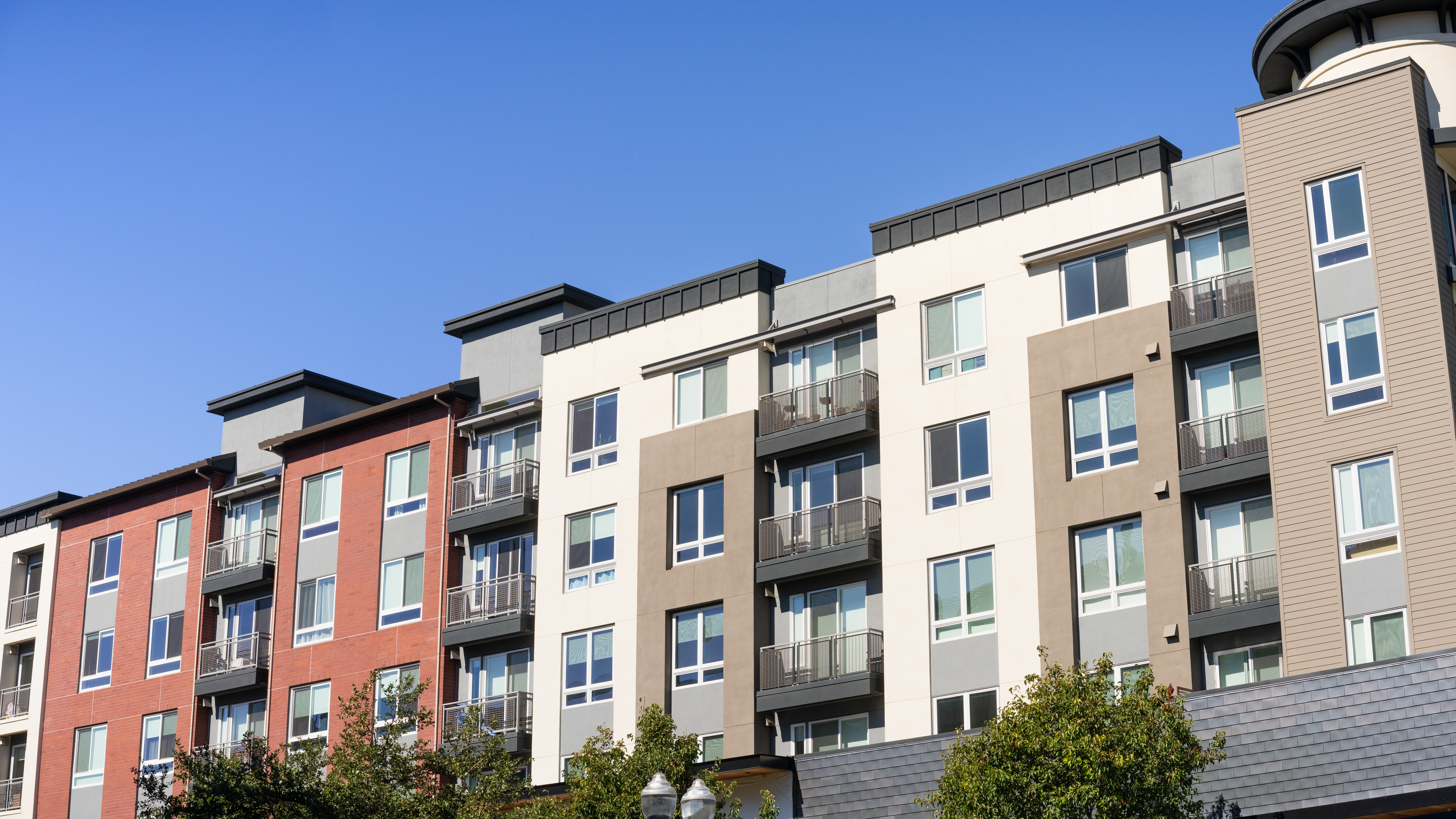HART’s submission to the Ontario pre-2024 budget consultations
The province of Ontario is in the midst of receiving consultation for their upcoming 2024 budget. In the course of our work, we’ve put together a data-driven submission on how Ontario could dramatically improve housing outcomes for 14.5 million people (and growing), and become one of the leaders in housing policy in Canada, without breaking the bank.
Context: Housing Need in Ontario
As of the 2021 census, there were 640,000 households in Ontario – over one in eight – in unaffordable, overcrowded, and/or uninhabitable private homes (known as core housing need). Of these households in need, over 70,000 can only afford to spend $455/ month or less on housing costs, and another 425,000 can only afford a maximum of $1,138/ month. Most low-income households are single people, but almost 130,000 of them are households that require two or more bedrooms. What is more, over 60% of households in Ontario, including families with children, can afford no more than $2,730/ month. It is increasingly difficult to find rents for two- and three-bedroom homes at that cost, and completely impossible to find ownership homes that can be afforded by median-income households.
These figures don’t consider:
- People who are homeless (without permanent secure housing) – at least 25,000 in Ontario are in emergency shelters or without shelter every night
- Almost a million college and university students, most of whom live independently
- At least 400,000 people in congregate settings: group homes, nursing homes, hospitals, prisons
- Temporary migrant workers, including farm workers
- Adults who are involuntarily living with roommates or family due to affordability concerns (suppressed household formation)
Ontario therefore needs to address the unmet housing needs of at least 1.5 million very low-, low-, moderate- and median-income households. What is more, it needs to address them in ways that reduce car dependency and reduce GHG emissions.
Ontario currently provides aggregate targets for municipalities, but it hasn’t moved quickly enough to implement recommendations from its Housing Affordability Task Force. It hasn’t enabled the kinds of low-cost market and nonmarket purpose-built rental, with and without supports, that can end homelessness and address housing need. Its welfare, health service, and legal aid cuts have forced many low-income people into homelessness. Last but not least, it must enable delivery of well-located housing where people need it most through acting on its own recommendations. This will require new commitments from the 2024 budget.
How Can Ontario Do Better?
We undertake research on national and international housing policy, including good ideas from the past as well as current good practices. Based on our analysis of fiscal and legislative powers in Canada and other three-tier governments (the US, Australia, France, Germany), we argue the federal government is responsible for:
- Developing national definitions, data, and targets on the need for affordable and adequate housing, in relation to the progressive realization of the right to adequate housing, including setting provincial and municipal targets and sub-targets and linking transfer payments to attainment of targets
- Providing and acquiring land and properties that can assist in meeting targets
- Providing grants and financing that addresses affordable housing infrastructure needs.
The provincial government must take an equal role in progressively realizing the right to adequate housing. Specifically, the provincial government must:
- Provide adequate welfare so that people can afford housing. The cheapest room in a shared house in Scarborough is $650/ month. At an Ontario Works payment of $733/ month, there is not enough money left over for food, let alone transit or a phone that might allow you to obtain work. Welfare rates have declined in relation to inflation for 30 years. The provincial government must either commit to increasing welfare rates significantly and/or commit much more funding per households for housing benefits that enable people to afford adequate homes – and extend them to many more people.
- Provide adequate housing, health, and social support to end homelessness: The lessons from the Harper-era At Home/Chez Soi national Housing First program 10 years ago were clear: providing a permanent supportive home to those who are homeless – including those with severe mental illness – saves the government $21,000 per person per year in emergency room, policing, and other costs. The Ontario government must follow the lead of BC and set an ambitious target for new and acquired supportive housing, with 10:1 tenant: service worker ratios (we would suggest 10,000 new homes with 24/7 support services over the next three years). This can be accomplished partly through a scaled-up factory built Rapid Housing Initiative featuring four storey buildings with 30-50 homes above a common area for on-site support services, delivered on government land with automatic municipal approvals and no property taxes;
- Improve renter protections to prevent homelessness: When average rents have doubled over the past seven years while average wages have increased by only 24%, it is hardly surprising that encampments are increasing in Ontario communities. Eliminating vacancy decontrol will reduce a strong incentive for evictions, as will rent banks, legal aid/ mediation, and other alternatives provided through municipal homelessness prevention services. The Ontario government should also assist municipalities to enforce short-term rental restrictions and consider a province-wide landlord registry, which would strengthen tenant protections against predatory landlords.
- Create a property acquisition strategy, following on from BC’s strong program, to retain affordable housing in perpetuity and build up nonmarket assets.
- End contracts with MPAC and Teranet, and return to an in-house provincial assessment system, in order to improve transparency of land assessment data and move to a system of annual property assessments, as is the case in BC. Allow and encourage municipalities to explore mechanisms such as land-value tax and progressive property taxation (e.g. luxury home sur-taxes on properties valued at over $3 million), in order to lessen dependence on regressive development charges, which force new residents to pay for infrastructure improvements that benefit existing homeowners.
- Work with the federal government to co-fund critical housing infrastructure for groups that have been neglected for over three decades, including students, those in need of supportive housing (including Long-Term Care, group homes for people with disability), and migrant farm workers. This includes leasing suitable government-owned land at no cost to nonmarket housing providers, including Metrolink and school board land, and encouraging colleges and universities to do the same.
Finally, the provincial government must take stronger action with municipalities to legalize low-cost well-located housing in all developed areas. We would recommend:
- A clear definition of income-based affordability, such as “paying no more than 30% of pre-tax household income, when the household income is low or moderate, i.e. less than 80% area median household income”
- Changes to the provincial building code to permit single-stair access to apartment buildings up to 6 storeys in height, with greater height allowed if firefighting equipment is suitable (the standard in Germany is 10 storeys)
-
Province-wide zoning changes to four storeys as of right in all residential and mixed-use areas, with no parking minimums, setbacks, or unit number restrictions, and a 50% height bonus for nonmarket or 100% affordable rental (with a 99-year affordability covenant and/or rent control);
- Eight storeys as of right within 400 metres of a frequent bus stop or transit station, with a 50% height bonus for 100% affordable rental housing
- 20 storeys as of right within 800 metres of a Major Transit Station Area, with a 50% height bonus for 100% affordable rental housing
- Restricting third party rights to appeal and requiring that municipalities approve all as of right applications within 45 working days of submission.
In relation to this, we note with approval the Ontario government’s recent return towards an income-based definition of affordable housing (rather than one that is market-based). We would urge the Ontario government to be more specific as to ‘affordable to whom’. We would argue that sub-targets for very-low income households earning less than 20% of area median household income (AMHI); low-income households earning 21-50% of AMHI; moderate income households earning 51-80% of AMHI; and median-income households earning 81-120% of AMHI be set by the provincial government.
The province needs to create municipal sub-targets, and link performance to infrastructure funding, to enable:
- 20% nonmarket in every municipality (France instituted this law in 2000, and increased the proportion to 25% in 2016; Paris has voluntarily taken on a target of 30%), scaling up nonmarket housing through acquisitions and new build;
- 25% 2+ bedroom and 10% 3+ bedroom apartments in larger apartment developments (with exemptions for student, senior, or supportive housing);
- At least 1/3 of new supportive housing to be For Indigenous, By Indigenous, to reflect much higher proportions of Indigenous homelessness.
The extreme housing shortage and the ensuing crises in affordability and homelessness requires an “all hands on deck” effort, but it’s important to remember that the federal government is showing up to the table with those municipalities seeking Housing Accelerator Fund money, but Ontario has been surprisingly absent from these conversations. As municipalities remain legally “creatures of the province”, Ontario has a ripe opportunity to step up with mandates and targets for all municipalities to follow (as BC has done) with this upcoming budget. The question is, will the Ontario government step up to the challenge, or continue to lag behind?



